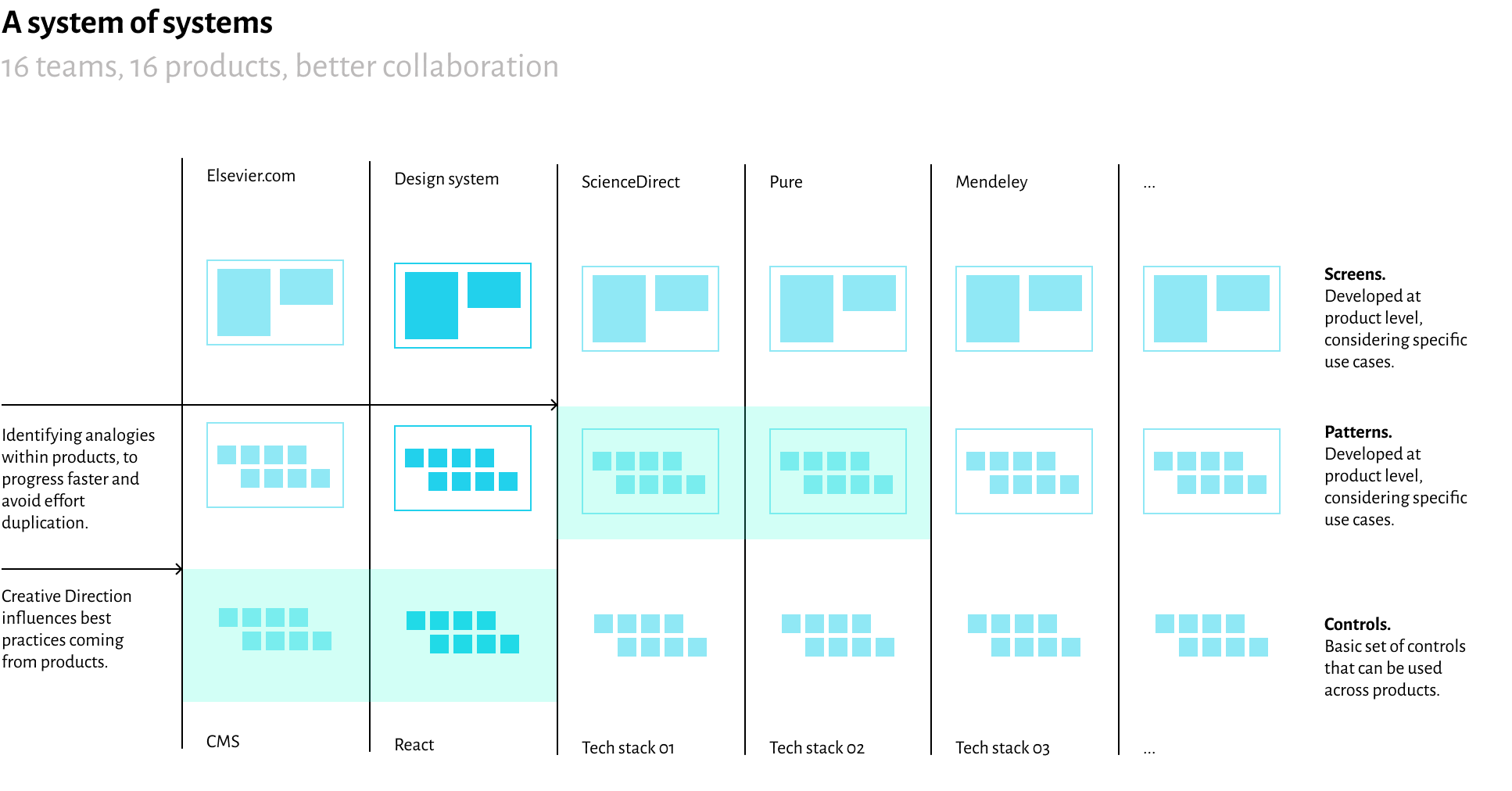Digital transformation at Elsevier, by design.
I guided a multidisciplinary team of 21 in times of profund change for the business. Together, we helped academics discover, manage, and publish their work. We created a cohesive service experience that simplified fragmented research workflows, integrating GenAI into them. This process also included the formation of a design system.
Impact. ScienceDirectAI was delivered in Q1 2025, entirely based on customers’ pain points. We prioritised exploratory research, delivering 3 validated solutions tested with 30,000 users.
The design system was included in the tech strategy, securing full adoption for 16 products.
My role. Design Director, Design Manager and Principal Designer.
Pivoting.
When I joined Elsevier, the Design team was on a growth trajectory, and the business was pivoting from a traditional model to a service first information provider, with a growth target of 4%. I played a key role in evolving the design system strategy and adoption across 16 products and devised the innovation framework for ScienceDirect. The same framework was scaled to 2 additional products in the Academics and Researchers portfolio: Mendeley and Knovel.
GenAI for ScienceDirect.
Years of customer research highlighted that researchers wanted to reduce time spent on repetitive tasks like literature review. In collaboration with Product and Engineering, we created the GenAI innovation strategy, developed over 8 months with input from more than 20 stakeholders across product, engineering, branding, marketing, and legal. We leveraged GenAI to surface and manage content more intelligently.
1.
Customer centric approach.
Rather than focusing on feature delivery, we embraced a customer - centric approach, adopting a lean product development methodology. We crafted 5 user stories and consolidated the main researcher's workflow to identify problems we needed to solve. These user workflows and journeys became our bread and butter in all workshops.
2.
Exploratory research.
Not all problems need to be solved with GenAI, exploratory research helped us decide what not to build. Design, product and engineering worked together end-to-end, contributing across innovation horizons 1, 2, and 3.
We delivered 6 GenAI solutions, testing 3 of them with 30,000 alpha customers.
3.
GenAI product integration.
ScienceDirect AI was delivered in Q1 2025. It provides a comprehensive set of tools to read, cite, and compare scientific literature. The system is built on a Retrieval Augmented Generation (RAG) architecture, leveraging Elsevier’s proprietary content to generate accurate outputs, based on trusted sources.
Mapping collaboration to build a design system.
16 design libraries and storybooks. For one button alone 81 email addresses have performed 559 commits on button files. A total of 15614 source code lines were changed from 13565 additions and 2049 deletions. Designers and engineers were loosing it, and product consistency was going out of the window. We needed a design system, but senior stakeholders were reluctant to prioritise it on BAU.
1.
Diagnose & frame.
I mapped the designer and engineer experience, identifying collaborative patterns, pain points, and I created the business case for the design system. I also highlighted how a design system could decrease production costs by a minimum of 30%, increasing brand consistency, encouraging collaboration, and keeping attrition below 2%. The business case was well received, securing a budget to sponsor the project and create a team of 2.
2.
Forming the community.
I created a cross - functional community of practice with design and engineering representatives from each product team, dedicating 20% of their time to design system work. The team operated with clear governance structures, including weekly creative direction sessions to maintain consistency across products and established processes for contributions and decision - making.
3.
Embed & scale.
We scaled the system from 1 product to a portfolio of 16, offering 3 levels of adoption: foundational design only, packaged tokens, or the full system. In 2024, an OKR was added to the tech strategy mandating adoption across all products by year end. This was a turning point, shifting the system from optional to strategic and embedding design consistency into delivery.










